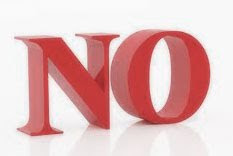 What's your New Year's resolution for 2012? To exercise more? To be more productive? We bet "a more honest and open relationship" isn't on many of your lists. That's because tons of people put their relationships on autopilot, hoping the kinks will just work themselves out - and then they argue each and every day, and end up resenting each other. The best way to have a happy relationship is to keep working on it, so even if you're not currently in a relationship rut, follow these 12 tips from our staff and you'll keep being happy.
What's your New Year's resolution for 2012? To exercise more? To be more productive? We bet "a more honest and open relationship" isn't on many of your lists. That's because tons of people put their relationships on autopilot, hoping the kinks will just work themselves out - and then they argue each and every day, and end up resenting each other. The best way to have a happy relationship is to keep working on it, so even if you're not currently in a relationship rut, follow these 12 tips from our staff and you'll keep being happy.1. Say "please" and "thank you." This shows your partner you appreciate them and keeps you from taking each other for granted.
2. Grab your partner's butt every day (or at least every other day).
3. Kiss every morning!
4. Say "good morning" every morning.
5. Cuddle.
6. Spend at least one night a week with your significant other and family/friends, i.e. don't hole up all by yourselves.
7. Use baby talk/pet names very sparingly. If you overuse these, you could damage your relationship since you won't be able to relate to each other seriously.
8. DO THE DISHES. Set up some type of system for who does them when.
9. Practice listening.
10. Practice honesty, even when it's uncomfortable.
11. If you and your partner are indecisive about where to eat or what movie to watch, play the "5-3-1" game. One person names five choices, the other vetoes two of them, and then the first person eliminates the remaining two. Ta-da, no more "Where you do want to eat?" "I don't care, what do you want to do?" (From 8 Relationship Tricks Happy Couples Use)
12. If you live together, make sure you each still have your own private space where you can retreat to work, think, or partake in bizarre grooming rituals that the other person wouldn't want to see.
 Being sure to sip water throughout a stressful day can soothe stress-induced symptoms as diverse as headaches, tense muscles, fuzzy thinking, a pounding heart, and low energy. That's because stress taxes all your basic body systems and when you're dehydrated, the effects are magnified.
Being sure to sip water throughout a stressful day can soothe stress-induced symptoms as diverse as headaches, tense muscles, fuzzy thinking, a pounding heart, and low energy. That's because stress taxes all your basic body systems and when you're dehydrated, the effects are magnified. When you wake up after a long night's rest, your body has gone as much as 12 hours without a meal. That means one thing: You need fuel. More precisely, it means there's probably a shortage of glucose in your bloodstream. If you don't eat breakfast and head out the door with low blood sugar, one organ in particular won't be operating at full speed: your brain, which requires a steady flow of blood sugar to run effectively. And even a mild case of low blood sugar can leave you queasy and jittery. You may also feel less sharp-witted. Studies of school children have shown repeatedly that kids who eat breakfast have better memories and learn more than their classmates who don't.
When you wake up after a long night's rest, your body has gone as much as 12 hours without a meal. That means one thing: You need fuel. More precisely, it means there's probably a shortage of glucose in your bloodstream. If you don't eat breakfast and head out the door with low blood sugar, one organ in particular won't be operating at full speed: your brain, which requires a steady flow of blood sugar to run effectively. And even a mild case of low blood sugar can leave you queasy and jittery. You may also feel less sharp-witted. Studies of school children have shown repeatedly that kids who eat breakfast have better memories and learn more than their classmates who don't. There are two types of polyunsaturated fats that are essential to your health and must come from your diet: omega-6 and omega-3.
There are two types of polyunsaturated fats that are essential to your health and must come from your diet: omega-6 and omega-3. No one knows for sure why sleep is necessary, but there's no doubt that getting too little throws a wrench into your body's works. For example, studies show that a sleep debt lowers levels of the hormone leptin, which helps keep your appetite under control. Implication: Sleep too little, and there's a good chance you'll be soon overeating. Sleep deprivation also boosts levels of stress hormones, which prompt your body to send more glucose into your bloodstream. Too little sleep also makes your body less sensitive to insulin.
No one knows for sure why sleep is necessary, but there's no doubt that getting too little throws a wrench into your body's works. For example, studies show that a sleep debt lowers levels of the hormone leptin, which helps keep your appetite under control. Implication: Sleep too little, and there's a good chance you'll be soon overeating. Sleep deprivation also boosts levels of stress hormones, which prompt your body to send more glucose into your bloodstream. Too little sleep also makes your body less sensitive to insulin. There's nothing wrong with getting angry - it's perfectly natural and healthy to get ticked off now and then. Staying angry is another matter altogether: It's terrible for you. Apart from wrecking your mood and alienating others, fuming all day can make it much harder to manage diabetes. Anger is a form of emotional stress, which causes your body to release adrenaline and other related hormones. One effect of these "stress" hormones is to raise blood sugar. Also, stress may make you indulge in bad habits, such as eating junk food, which can make matters worse.
There's nothing wrong with getting angry - it's perfectly natural and healthy to get ticked off now and then. Staying angry is another matter altogether: It's terrible for you. Apart from wrecking your mood and alienating others, fuming all day can make it much harder to manage diabetes. Anger is a form of emotional stress, which causes your body to release adrenaline and other related hormones. One effect of these "stress" hormones is to raise blood sugar. Also, stress may make you indulge in bad habits, such as eating junk food, which can make matters worse. There are many sweeteners products nowadays, according to the most recent study conducted by reliable resource, here are the 4 top best guys in sweeteners products:
There are many sweeteners products nowadays, according to the most recent study conducted by reliable resource, here are the 4 top best guys in sweeteners products: A child protection unit has called on Twitter to help tackle online child abuse by working harder to report suspicious activity.
A child protection unit has called on Twitter to help tackle online child abuse by working harder to report suspicious activity. Popular Apple-watching website iLounge claims to have had a first hands-on with iPad 3, behind the scenes at CES. The claim isn't too outlandish: iLounge broke a story about iPad 2 at CES last year, which turned out to be authentic.
Popular Apple-watching website iLounge claims to have had a first hands-on with iPad 3, behind the scenes at CES. The claim isn't too outlandish: iLounge broke a story about iPad 2 at CES last year, which turned out to be authentic. It’s well-documented that vegetarians are healthier than the general population. People who do not eat meat, fowl, or fish have a lower risk of heart disease, lower cholesterol, less incidence of type 2 diabetes, lower rate of hypertension, and lower overall cancer rates.
It’s well-documented that vegetarians are healthier than the general population. People who do not eat meat, fowl, or fish have a lower risk of heart disease, lower cholesterol, less incidence of type 2 diabetes, lower rate of hypertension, and lower overall cancer rates. Here are some foods that help you sleep: Almonds, oats, pistachios, pumpkin seeds and wheat are all good sources of tryptophan, an amino acid that helps the body produce serotonin and melatonin.
Here are some foods that help you sleep: Almonds, oats, pistachios, pumpkin seeds and wheat are all good sources of tryptophan, an amino acid that helps the body produce serotonin and melatonin. These are symptoms identified as showing your tech habits might be unhealthy:
These are symptoms identified as showing your tech habits might be unhealthy: How much sugar can you eat without compromising your health? The American Heart Association (AHA) recommends women limit their consumption to less than 6 teaspoons per day. The AHA wants men to stick to less then 9 teaspoons, and for kids 4 to 8 years old, only 3 teaspoons of sugar are allowed.
How much sugar can you eat without compromising your health? The American Heart Association (AHA) recommends women limit their consumption to less than 6 teaspoons per day. The AHA wants men to stick to less then 9 teaspoons, and for kids 4 to 8 years old, only 3 teaspoons of sugar are allowed. Rather than tossing all of those trees immediately into the recycle bin, you can give them a brand new life, here are several tips:
Rather than tossing all of those trees immediately into the recycle bin, you can give them a brand new life, here are several tips: It's easy to get distracted or overwhelmed at work. But one of the secrets of highly productive people is that they learn when and how to say "no." For starters, say "no" to whiners, complainers and distracting people.
It's easy to get distracted or overwhelmed at work. But one of the secrets of highly productive people is that they learn when and how to say "no." For starters, say "no" to whiners, complainers and distracting people. Electric E-Bugster concept chops the Beetle’s top and replaces its petrol engine with plug-in drivetrain. Leaked images and details of a funky new version of the Volkswagen Beetle that runs purely on electricity have been revealed online.
Electric E-Bugster concept chops the Beetle’s top and replaces its petrol engine with plug-in drivetrain. Leaked images and details of a funky new version of the Volkswagen Beetle that runs purely on electricity have been revealed online. The interior, designed by Marc Newson includes LCD touch panels, leather seating, plants, sheepskin-covered full-length beds and more than 1,000 videos to choose from.
The interior, designed by Marc Newson includes LCD touch panels, leather seating, plants, sheepskin-covered full-length beds and more than 1,000 videos to choose from. Emails are key to communication in the office. Yet, as a rule, they are badly written. So by consistently sending sharp, well-composed electronic messages, you will make yourself stand out from the crowd, and these are 10 tips of how you do it:
Emails are key to communication in the office. Yet, as a rule, they are badly written. So by consistently sending sharp, well-composed electronic messages, you will make yourself stand out from the crowd, and these are 10 tips of how you do it: Managing stress is challenging, Roach says, but worth the effort. "It has such a powerful effect on your health." Chronic stress takes a huge toll on your body. It's linked to obesity, high cholesterol, depression, digestive woes, and insomnia. Stress also wears down your immune system, leaving you more vulnerable to colds and flu.
Managing stress is challenging, Roach says, but worth the effort. "It has such a powerful effect on your health." Chronic stress takes a huge toll on your body. It's linked to obesity, high cholesterol, depression, digestive woes, and insomnia. Stress also wears down your immune system, leaving you more vulnerable to colds and flu. Some health experts don't advise over-the-counter medications, but one simple treatment you can try that is surprisingly effective against upper respiratory infections is hydrogen peroxide. Always ensure you don't have any allergic to the treatment before applying.
Some health experts don't advise over-the-counter medications, but one simple treatment you can try that is surprisingly effective against upper respiratory infections is hydrogen peroxide. Always ensure you don't have any allergic to the treatment before applying.




